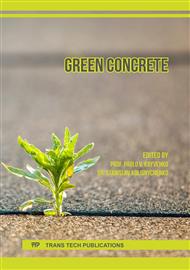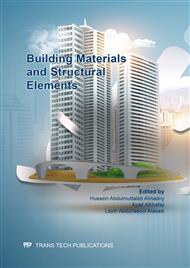p.1
p.12
p.20
p.31
p.41
p.50
p.59
p.68
Calculating Dynamic Strengths of Concrete Subjected to Impact Load
Abstract:
The objective of this paper is to calculate the influential properties of concrete. These are the dynamic properties of sustainable concrete in the situation in which metal waste can found within its components. Growing the rate of pollution in the world, a fast decrease of the original resource, the requirement for utilization more areas of natural land, and increase the price of the newly available area are the reasons that make the researchers give great attention to the new concrete (green concrete) and destruction of unwanted material in the green mix. The concept of reuse aimed at sustainable structures was implemented within the current paper through consuming metal waste of cans and bottle caps in concrete. The waste materials were consumed in two modes; at 1st mode, it was applied in the role of fibres and mixed using 15% by weight of cement. On the 2nd mode, it was applied as coarse aggregate with 25% replaced by volume. The procedure includes testing 4 concrete mixes. The estimated properties were the flexural and compressive strengths, besides modulus of elasticity. Adding bottle caps (waste materials fibres) in concrete led to enhancement in strengths. The use of walls of cans (waste materials fibres) in concrete reduced the strengths. While in the case of compacted bottle caps plus pull-tab of cans (waste materials aggregate), concrete mechanical properties a little below the reference mix. The dynamic properties of concrete contain these types of waste under impact load were determined. As known, the dynamic properties are so helpful in the strategy that deals with civil constructions put in danger of impact loads like runways, gas explosion, etc. CEB-FIP (2010) code provides wide-ranging formulas to predict the strain change of concrete. The dynamic properties are determined by this code with consideration strain level between (10-2-100). In this range, dynamic loads in the civil constructions at the level of quasi-static strain were predicted.
Info:
Periodical:
Pages:
12-19
Citation:
Online since:
August 2021
Price:
Сopyright:
© 2021 Trans Tech Publications Ltd. All Rights Reserved
Share:
Citation:



